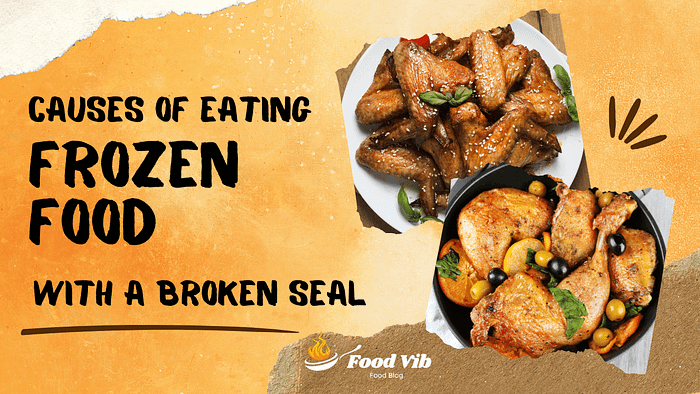
We’ve all been there: you reach for a bag of frozen veggies or a frozen pizza, only to discover a broken seal lurking on the packaging. Panic sets in. Is the food still safe? Can you eat it? Fear not, freezer warrior! While a broken seal isn’t ideal, understanding the culprits behind this breach can help you make informed decisions about your frozen feast.
The Usual Suspects:
- Roughhousing in the Freezer: Let’s face it, freezers can be battlegrounds. Sharp corners, jostling ice cream cartons, and overenthusiastic digging can snag and tear packaging. If the damage seems like an accidental bump, the food might be salvageable.
- Temperature Fluctuations: Ever open the freezer door for an extended “what to eat?” browse? Those temperature swings can cause condensation and ice buildup, putting stress on seals and potentially leading to tears.
- Manufacturing Mishaps: While rare, faulty packaging or improper sealing during production can occur. This is more likely with lesser-known brands or budget options.
- Sharp Objects Afoot: Bones, ice shards, or even rogue bottle caps can lurk within your frozen bounty, puncturing packaging with their pointy malice.
Safety First: When to Toss and When to Cook:
- Visible Spoilage: If the food shows signs of discoloration, off odors, or sliminess, toss it without hesitation. Foodborne illness is no joke!
- Major Seal Breach: If the tear is large or exposes a significant portion of the food, err on the side of caution and discard it.
- Unclear Timeline: If you’re unsure when the seal broke, it’s better to be safe than sorry. Frozen food doesn’t magically pause spoilage, so when in doubt, throw it out.
- Minor Seal Nick: For small tears or punctures, you might have a fighting chance. If the food looks and smells normal, and the breach is minimal, cook it thoroughly to an internal temperature that kills harmful bacteria (check the USDA guidelines for specific foods). However, use your best judgment and discard if something seems off.
Prevention is Key:
- Store Wisely: Organize your freezer for stability, minimize jostling, and keep sharp objects away from packaged goods.
- Mind the Temperature: Avoid frequent freezer door openings and overloading, as both contribute to temperature fluctuations.
- Inspect Before Buying: Check for damaged packaging at the store, especially for lesser-known brands.
- Invest in Reusable Containers: Consider transferring frequently used frozen items to sturdy, reusable containers for extra protection.
By understanding the reasons behind broken seals and following safe handling practices, you can turn the freezer aisle into a battlefield of delicious possibilities, not a minefield of potential foodborne illness. Remember, when in doubt, throw it out! Your taste buds and tummy will thank you.
For comprehensive information about Causes of Frozen Food with a Broken Seal and a diverse range of recipes, we invite you to explore our website, Food ViB
